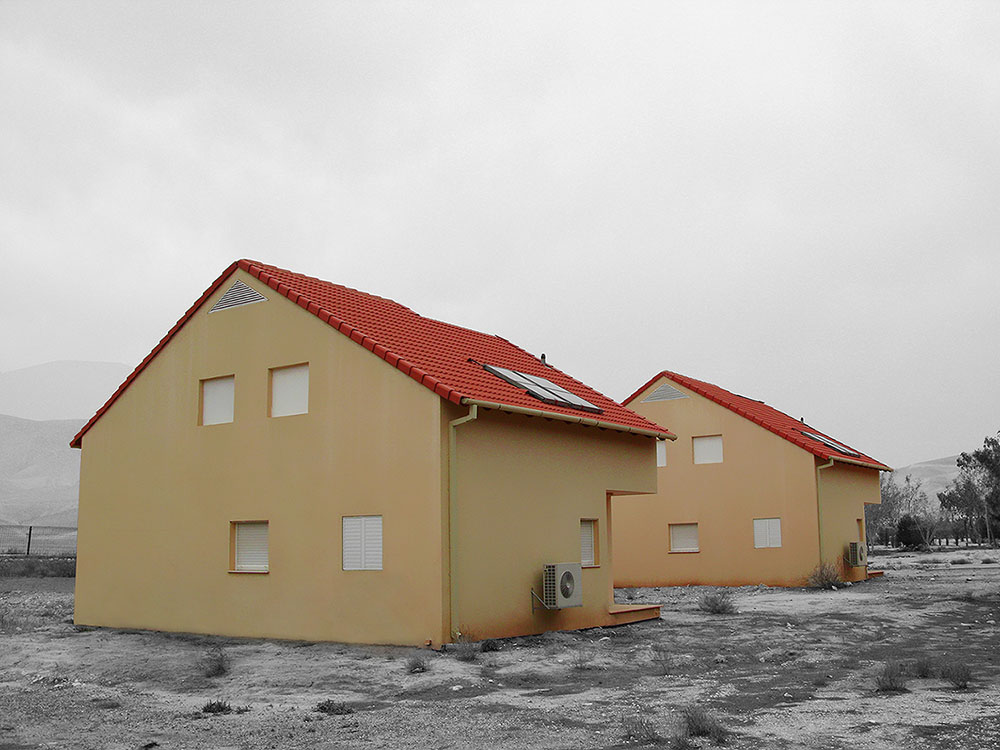
Winter #236, 2007, c-print, image: 45x60 cm, paper: 120x80 cm

Winter #117, 2006, c-print, image: 45x60 cm, paper: 120x80 cm

Summer Palette #824, 2006, c-print, image: 45x60 cm, paper: 120x80 cm

Summer Palette #823, 2006, c-print, image: 45x60 cm, paper: 120x80 cm

Summer Palette #821, 2006, c-print, image: 45x60 cm, paper: 120x80 cm

Summer Palette #819, 2006, c-print, image: 45x60 cm, paper: 120x80 cm
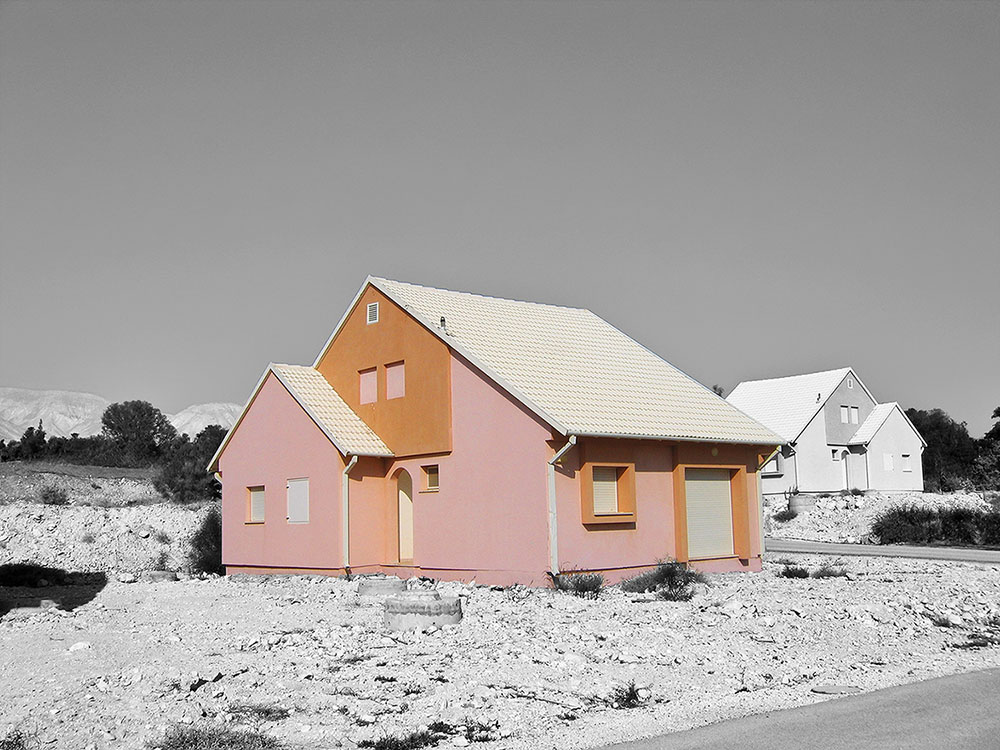
Summer Palette #812, 2006, c-print, image: 45x60 cm, paper: 120x80 cm
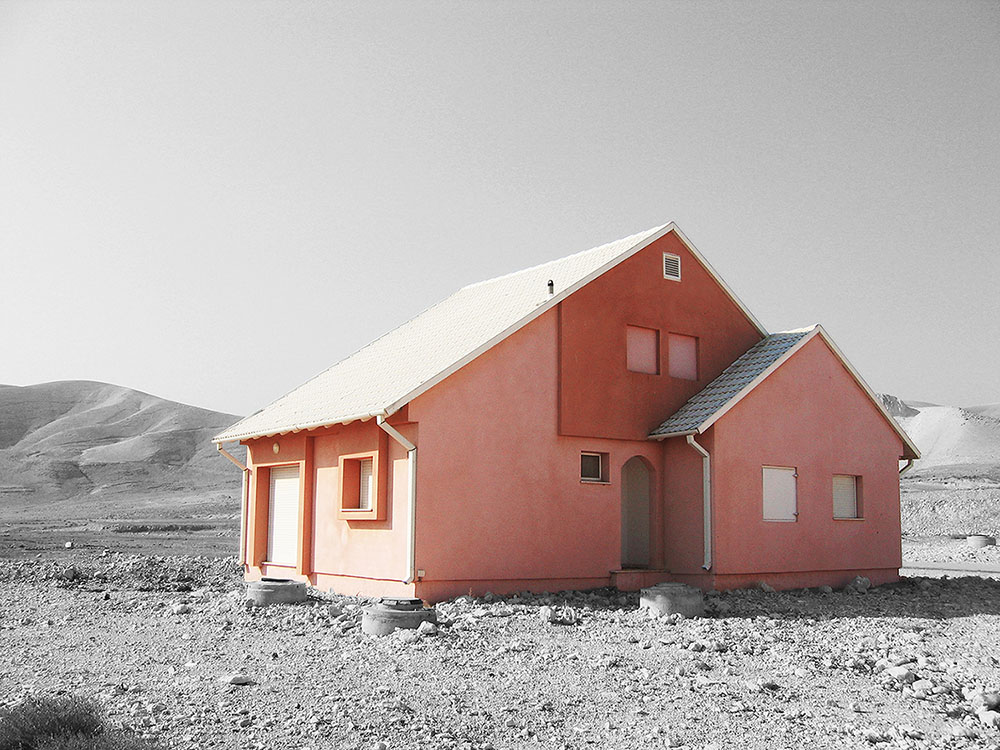
Summer Palette #810, 2006, c-print, image: 45x60 cm, paper: 120x80 cm
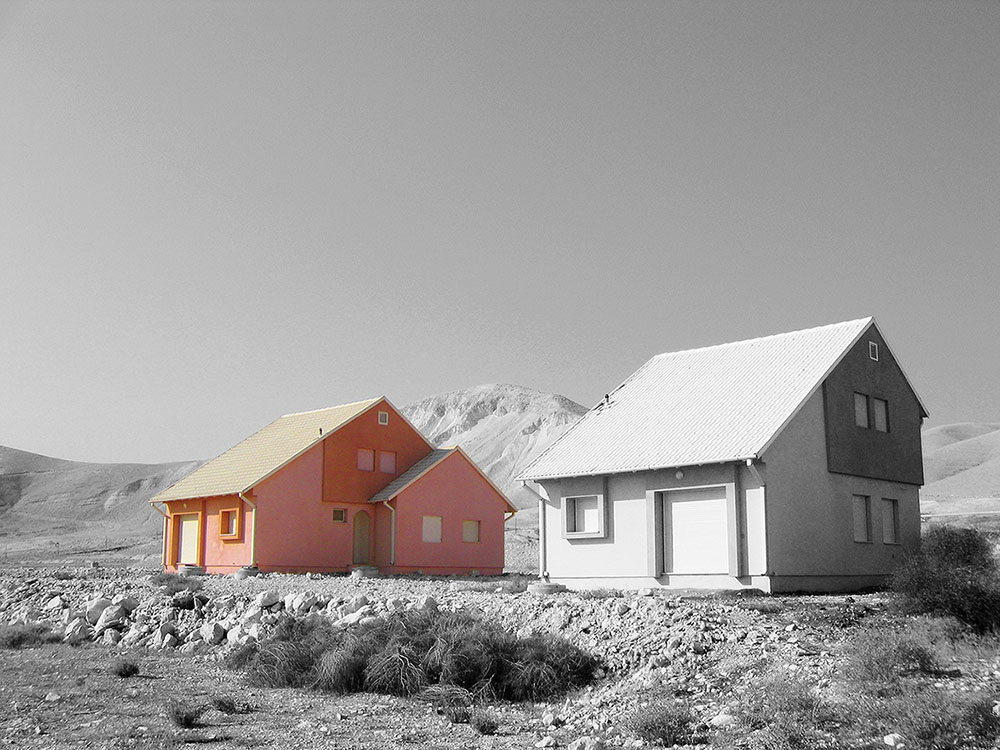
Summer Palette #808, 2006, c-print, image: 45x60 cm, paper: 120x80 cm
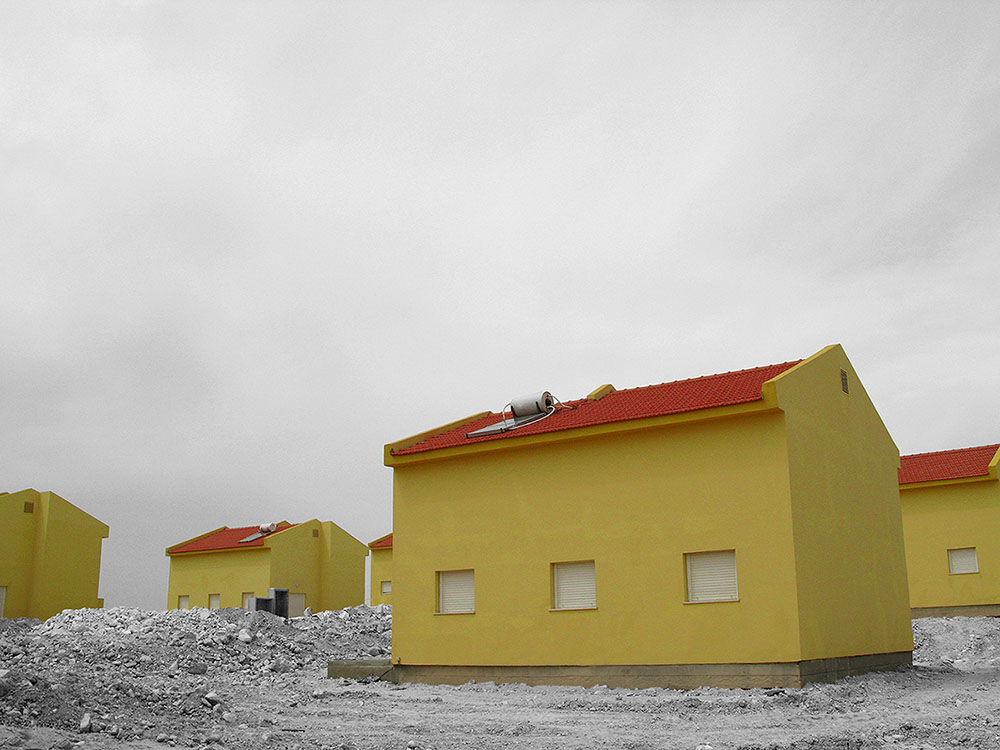
Autumn Spring Palette #490, 2007, c-print, image: 45x60 cm, paper: 120x80 cm
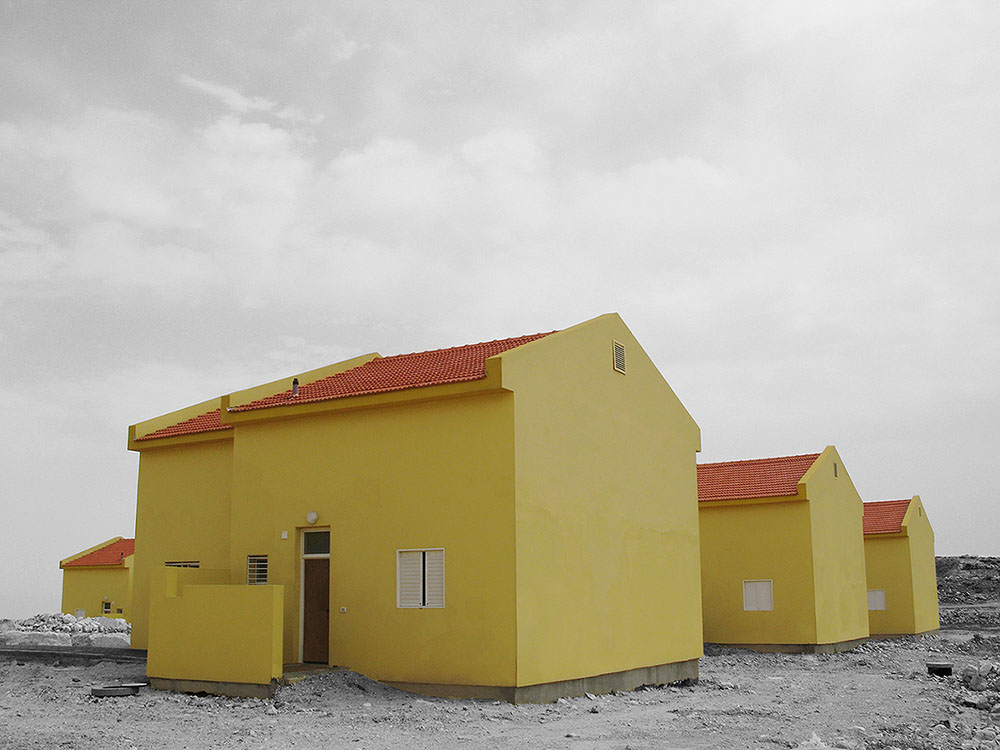
Autumn Spring Palette #475, 2007, c-print, image: 45x60 cm, paper: 120x80 cm
“Toister’s architectural photography goes against the grain of Israeli architecture, as well as against Israeli photography, which obsessively engages in the politics of Israeli space. The series Palettes which was photographed in the Jordan Valley and southern Mount Hebron and depicts the settlement housing of Amana and similar movements, ostensibly refuses to recount the Israeli narrative – the politics of dispossession and appropriation, the Zionist narrative of conquering the land. The subject of the photographs is not geopolitics but rather the zero point of architecture: those remnants of modernist rationalism, the model that replicates itself time and time again in the Israeli Levittown, as well as in the manipulations Toister performs on the photographs, from which he removes any indication of location, leaving the buildings like relics in the heart of the desolate wilderness. The buildings were usually photographed right after the completion of construction and before they were inhabited, the point in time when architecture is traditionally photographed. It is the moment in which, at least in the perception of architects, a building is in its optimal state – pristine and new, without any marks of wear and tear inflicted on it by its users.”
(Yuval Yasky)
Download full text
“Toister’s images are deceptively simple, even de-aestheticized. Each photograph captures repetitive forms in a vacant environment, a conjunction that underlines the austere, denaturalized appearance of the landscape. This aesthetic recalls the saturated, artificial habitats in Dan Graham’s Homes for America (1966), or Lewis Baltz’s The Tract Houses (1971), a sequential meditation on stucco homogeneity in Southern California. While Toister’s photographs likewise appear to put forth little information about their subject, unlike his predecessors, they turn on a slight of hand. Each photograph is completed with the addition of uncanny, vibrant color to the modular structures pictured, effectively amplifying their stark contrast against a colorless backdrop. The result of this contradistinction is that the vacant architecture appears to arbitrarily conform to a rational logic – the prismatic organization of color.”
(Chris Balaschak)
Download full text
“The ‘Palettes’ series consists of digitally processed photographs of a rural settlement. These works openly state that they have undergone an act of effacement, completely ‘cleansing’ the landscape of any extraneous “noise” likely to conceal the houses and impair their integrity or the analogous integrity of the photograph. In these works Toister introduces a discussion of color as a model by exhibiting a ‘color photograph’ and a ‘black-and-white photograph of the same image on a common support, doing so in such a way that it is difficult for the viewer to decide whether color has been removed from the image, or added to it. Although it is well known that black-and-white photography historically preceded color, and revisiting its origins is consistent with the initial phase of establishing a settlement that is ostensibly depicted in the photograph, the digital appearance and the fashionable look of these works undermine the historicity of the photograph and award primacy to color. Presenting identically designed houses as a model intensifies the anonymity of the photograph: we have before us a ‘nowhere’ that is also ‘everywhere.’ Despite the realistic portrayal, the photographs are almost completely abstract. Although Toister usually takes his photographs in places of historical or political significance – such as the pictorial photographs taken at the beginning of his career at sites mentioned in the Bible, or images of settlements in the Occupied Territories – this is not indicated. The absence of information about places that are so fraught with meaning enhances the abstraction.”
(Naama Haikin)
Download full text